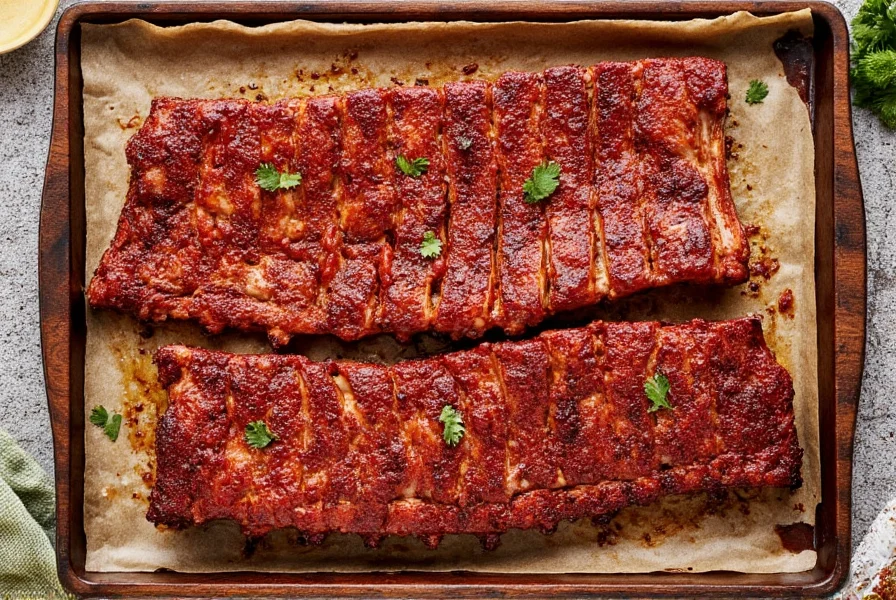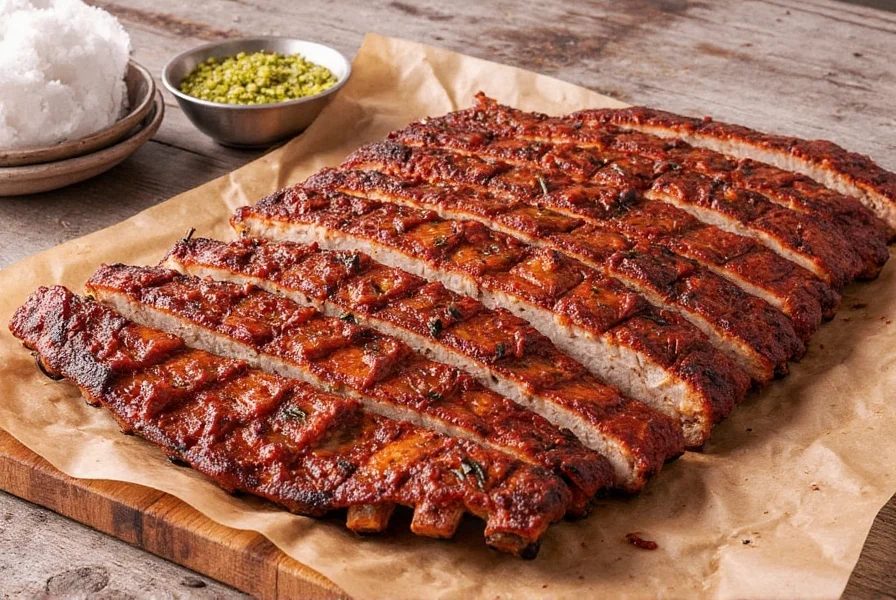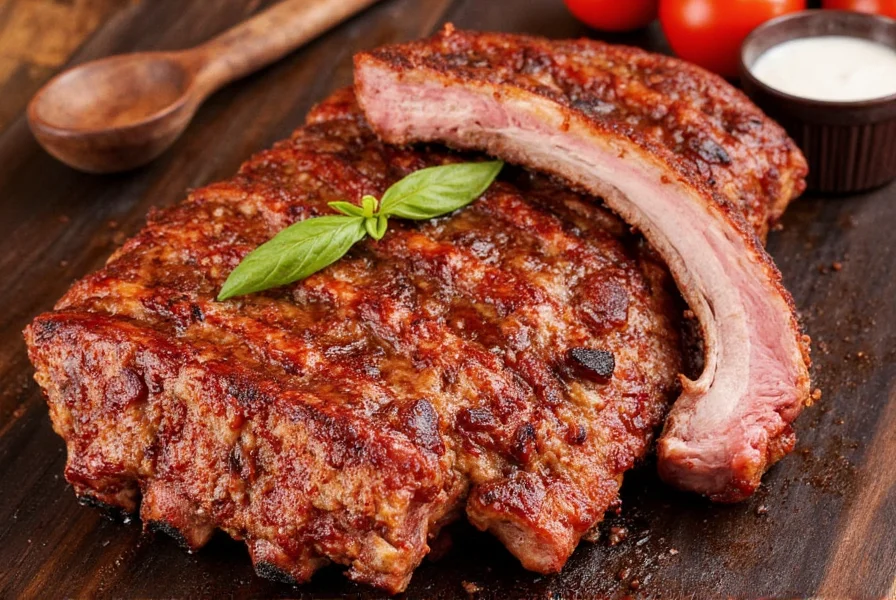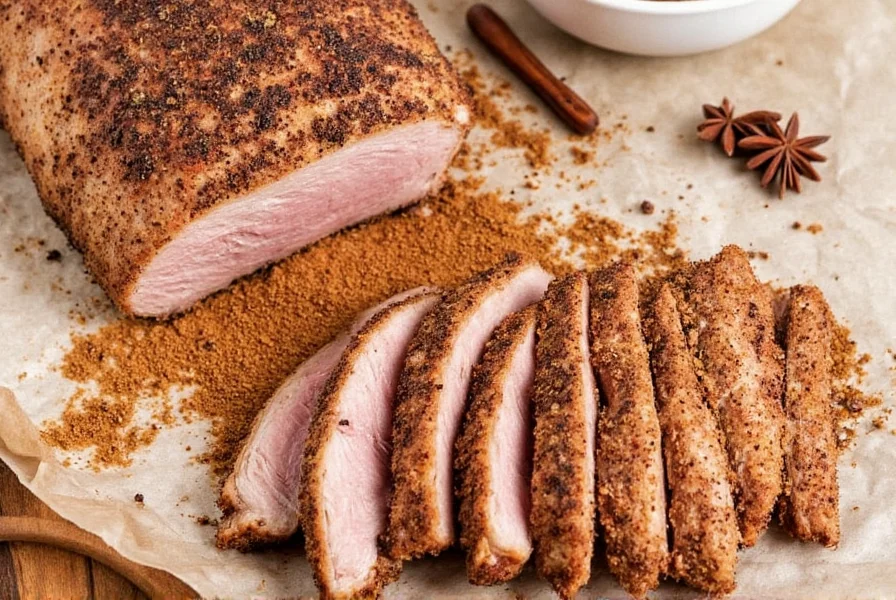Pork ribs are a beloved staple in BBQ and grilling, but not all ribs are created equal. Whether you're a beginner or a seasoned pitmaster, understanding the differences between rib types is crucial for achieving the perfect cook. This guide breaks down the four main pork rib cuts—baby back, spare, St. Louis, and country-style—and explains how to choose the right one for your cooking needs. Discover flavor profiles, cooking tips, and expert recommendations to elevate your next BBQ session.
| Rib Type | Fat Content | Tenderness | Flavor Level | Best For |
|---|---|---|---|---|
| Baby Back Ribs | Low | High | Moderate | Quick meals, indoor cooking, delicate palates |
| Spare Ribs | High | Moderate | High | Slow smoking, bold flavors, outdoor events |
| St. Louis Cut Ribs | Medium-High | Moderate | Very High | Competitions, professional plating, even cooking |
| Country-Style Ribs | Low-Medium | High | Moderate | Grilling, stir-frying, weeknight dinners |
What Are the Main Pork Rib Cuts?
Pork ribs come from different parts of the pig, which is why they differ so much in flavor, fat content, and cooking time. Here's a quick overview of the four main types:
1. Baby Back Ribs

- Cut from the top of the rib cage, near the spine
- Tender, lean, and slightly curved
- Typically more expensive
2. Spare Ribs

- From the belly area, closer to the breastbone
- Meatier with more fat and connective tissue
- More flavorful but require longer cook times
3. St. Louis Cut Ribs

- A trimmed version of spare ribs
- Cleaner shape with uniform thickness
- Popular in competitions and restaurants
4. Country-Style Ribs

- Cut from the shoulder end of the loin
- Thicker, meatier, less bone
- Often grilled or pan-seared rather than smoked
Why Ribs Vary in Tenderness and Fat Content
The difference between rib types largely comes down to where they're cut from on the hog. The baby back region (loin area) is naturally more tender and lean, while the spare rib section has more connective tissue and marbling due to its proximity to the belly.
Texture-wise, tenderness depends on muscle usage — the less worked the muscles are, the more tender the meat. Baby backs win here because they're located along the back of the pig, an area that doesn't get much exercise.
Fat content impacts both moisture and flavor. Fattier cuts like spare and St. Louis ribs melt into the meat during long cooks, enhancing juiciness and richness. Leaner cuts like baby backs can dry out faster if overcooked, so timing is key!
Best Spice Blends for Each Rib Type
Spice plays a crucial role in elevating the natural taste of pork. Matching the right rub to the right rib ensures harmony between protein and seasoning. Here are some pro tips:
- Baby Backs: Go light and balanced. Think paprika-based rubs with brown sugar, garlic powder, and mustard seed.
- Spare & St. Louis Ribs: These can handle bold flavors. Try smoky chipotle, cumin-heavy blends, or sweet-hot combinations.
- Country-Style Ribs: Pair with zesty herbs like rosemary and thyme or go Asian-inspired with ginger and soy-based marinades.

How to Choose the Right Ribs for Your Occasion
Choosing the right rib type isn't just about price — it's about your cooking style and who you're feeding. Let's break it down by occasion:
- Weeknight Dinner: Baby backs or country-style ribs — easy, fast, and family-friendly.
- Barbecue Party: Spare or St. Louis ribs — big flavor, perfect for sharing.
- Kids' Menu: Baby backs — mild, tender, and fun to eat.
- Smoker Challenge: St. Louis ribs — great for mastering heat zones and smoke balance.
- Restaurant-Quality Plating: St. Louis or baby backs — clean lines, elegant presentation.
The Ultimate Buying Guide for Pork Ribs
Ready to pick up some ribs? Use this handy guide to make sure you're getting quality cuts every time:
Look For:
- Even meat coverage: Avoid ribs with large bare spots.
- Pinkish-red color: Gray or brown patches = old meat.
- Flexibility: When bent, good ribs should snap back — not crack.
- Uniformity: Especially important for competition cuts.
Product Spotlight: Top-Rated Rib Brands
- Farmer Focus Organic Baby Back Ribs
- Features: USDA Organic, pasture-raised, hormone-free
- Use Cases: Health-conscious families, organic lifestyle seekers
- Suitable Occasions: Casual dinners, meal prep
- D'Artagnan St. Louis Cut Spareribs
- Features: Heritage breed, dry-aged for flavor, premium grade
- Use Cases: Serious foodies, chefs, upscale catering
- Suitable Occasions: Holidays, gourmet events
- Hormel Natural Choice Country-Style Ribs
- Features: Minimally processed, no artificial ingredients
- Use Cases: Quick-cooking meals, budget-friendly options
- Suitable Occasions: Weeknight dinners, camping trips
What's the main difference between baby back ribs and spare ribs?
Baby back ribs come from the top of the rib cage near the spine and are leaner, more tender, and typically more expensive. Spare ribs come from the belly area, are meatier with more fat and connective tissue, and have richer flavor but require longer cooking times.
Which type of ribs is best for beginners?
Baby back ribs are generally considered best for beginners because they're more forgiving to cook - they're leaner, cook faster, and are less likely to dry out. Their consistent size and shape also make them easier to work with for first-time rib cooks.
How much pork ribs should I plan per person?
As a general rule, plan for about 1 pound (450g) of uncooked ribs per person for baby backs or St. Louis cut ribs, which translates to roughly 1/2 to 2/3 pound cooked. For spare ribs, which have more bone, you might want to increase to 1.25 pounds per person. Country-style ribs are meatier, so 3/4 pound per person is usually sufficient.
Why are St. Louis cut ribs so popular in BBQ competitions?
St. Louis cut ribs are popular in competitions because they have a uniform shape that cooks evenly, making them visually appealing when plated. The trimming process removes excess fat and cartilage, resulting in a more consistent texture. Their higher fat content compared to baby backs also allows for better smoke penetration and flavor development during long cooks.
Do I need to remove the membrane from all types of ribs?
Yes, it's generally recommended to remove the membrane (silver skin) from the bone side of all rib types before cooking. The membrane can become tough and chewy during cooking and prevents smoke and seasonings from penetrating the meat. Baby backs and spare ribs/St. Louis cuts definitely need the membrane removed, while country-style ribs often don't have this membrane as they're cut from a different part of the pig.
What's the ideal internal temperature for perfectly cooked pork ribs?
Unlike other meats where specific internal temperatures indicate doneness, ribs are done when they reach a certain texture rather than a specific temperature. However, most pitmasters aim for an internal temperature between 195°F and 205°F (90°C-96°C). At this range, the collagen has melted into gelatin, creating that desirable 'bend' when lifted with tongs and the meat easily pulls back from the bones.
Final Thoughts: Finding Your Perfect Pork Rib Match
There's no one-size-fits-all when it comes to pork ribs. Whether you're after the buttery softness of baby backs or the deep, savory punch of St. Louis cuts, the key is knowing what kind of experience you want — and choosing accordingly.
Experiment with spices, test different cooking methods, and don't be afraid to ask your butcher for advice. After all, the joy of ribs lies not just in eating them, but in discovering your personal favorite style. So fire up the grill, dust on your favorite rub, and enjoy the journey!
Now that you've got the low-down on pork rib types, it's time to put theory into practice. Whether you're planning a backyard bash or just craving something sticky-savory for dinner, remember: the right rib makes all the difference. Happy cooking!










 浙公网安备
33010002000092号
浙公网安备
33010002000092号 浙B2-20120091-4
浙B2-20120091-4